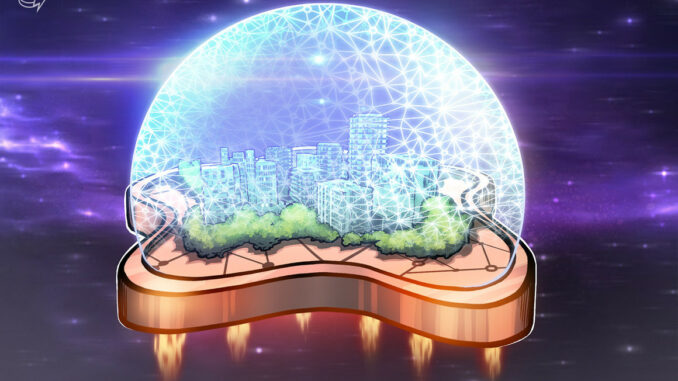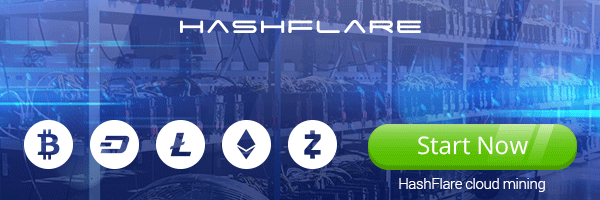
“You will own nothing and you will be happy,” — this sentiment was at the core of a declaration issued more than 30 years ago in 2016 by the leaders of the World Economic Forum. It sounded dystopian, like something taken from a book by Aldous Huxley or George Orwell. It was probably among the most insidious ideas I’d ever heard.
Somehow, I remembered that idea today in 2050 when selling my racing drone. I guess I was reminded of the merits of true, private ownership. It was a beautiful two-seater, capable of going from 0 to 100 km/h in two seconds — which wasn’t that bad for an electric vehicle, especially considering it was built in the previous decade.
It took about an hour to find a buyer on a surprisingly niche marketplace that’s built on top of Efinity, a blockchain network my company created during the early days of nonfungible tokens (NFTs). Even after all these years, the network is still alive and kicking, having seen countless upgrades enabled by its future-proof design. The transaction was done pretty simply through a smart contract. I checked my cryptocurrency balance to confirm payment and watched my drone drive itself to its new owner half a world away. While the range on a single charge wasn’t great on those vintage models, there were enough charging stations for it along the way.
Through our transaction, the buyer was now in the possession of a powerful nonfungible token which gave her both legal, tangible and immutable ownership over the drone. Without that NFT in her wallet, the racing drone would otherwise be a useless hunk of scrap metal. There were no intermediaries and no unnecessary paperwork. Just a simple efficient transaction between two drone racing enthusiasts living on different continents.
These days, NFTs are everywhere and everything.
From small, everyday appliances like my coffee maker and orbital nanosat, to smart apartments, there are at least a dozen near-Earth space rocks being traded as fractionalized NFTs, fueling the growth of the asteroid mining industry. And that’s just tokenized real-life assets — don’t even get me started on the stuff that exists only in the digital domain.
Combining the virtual and the real, the Metaverse is an amazing yet strange labyrinth of creativity and economic activity that not only helped lift hundreds of millions out of poverty but also played a critical role in funding some of mankind’s greatest engineering projects.
Related: Sci-fi or blockchain reality? The ‘Ready Player One’ OASIS can be built
Today’s drone sale made me pause to think just how different the concept of ownership is today. The advent of unbound true ownership of both physical and digital assets opened up amazing possibilities for us, both as individuals and as a civilization. So we did what humans do best when given the right opportunity and resources: We prospered.
It’s a funny thing, blockchain and NFTs have even become the key to trade between planets, as Mars is now home to tens of thousands of adventurous colonists, hosting everyone from structural engineers to swarm robotics experts. Mars has its own ecosystem of decentralized networks, separated from Earth-based blockchains by a pesky light-speed delay. Though the two network clusters are highly asynchronous, their communication protocols allow Martians and Earthlings to easily trade with each other.
Related: The convergence between Tesla, SpaceX, renewable energy and Bitcoin mining
I bought an NFT giving me partial yet significant ownership of a Martian water production facility, and I have multiple friends who instructed their AI assistants to automatically invest in well-performing companies on the Red Planet. A game made by a Martian developer went viral on Earth a few weeks ago and is on its way to becoming the next Lost Relics.
To most kids now, these concepts aren’t at all magnificent — to them, it’s normal and mundane.
I like to think about how blockchains will evolve in the next century, with complex interactions between planets and space habitats that are separated by a vast void, yet connected economically, socially, culturally and perhaps even politically through intricate radio waves sending blockchain data back and forth.
To think this all started over three decades ago… We’ve come a long way since those early days. Now, I think it’s time for me to buy an NFT. I’ve been eyeing up a particular custom racing model for weeks now, and its holographic interface looks sick.
This article does not contain investment advice or recommendations. Every investment and trading move involves risk, and readers should conduct their own research when making a decision.
The views, thoughts and opinions expressed here are the author’s alone and do not necessarily reflect or represent the views and opinions of Cointelegraph.
Maxim Blagov is co-founder and CEO of Enjin, an ecosystem of blockchain software products that help to develop, trade, monetize and market with NFTs. He has over 20 years of experience in creative direction, project management, and UX/UI design, with expertise in concept and strategy development for large interactive and blockchain applications.





 Bitcoin
Bitcoin  Ethereum
Ethereum  Tether
Tether  XRP
XRP  Solana
Solana  USDC
USDC  TRON
TRON  Lido Staked Ether
Lido Staked Ether  Dogecoin
Dogecoin
Be the first to comment